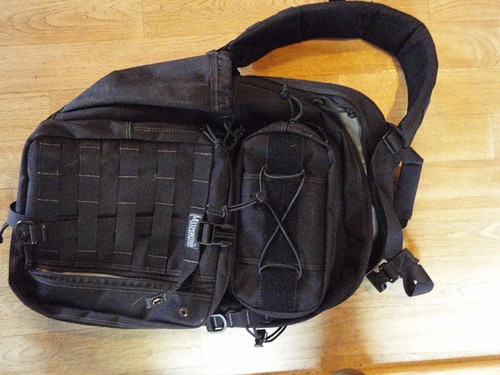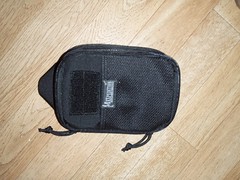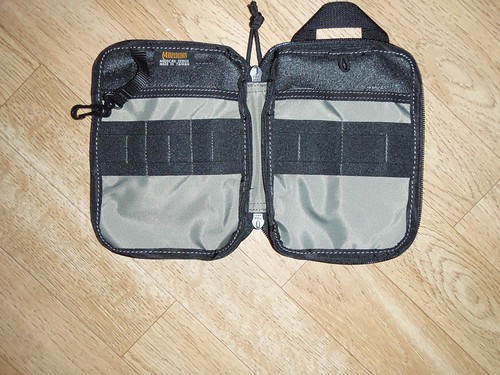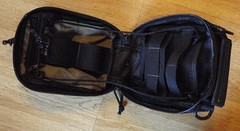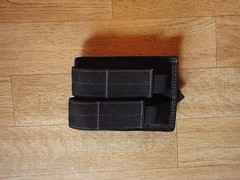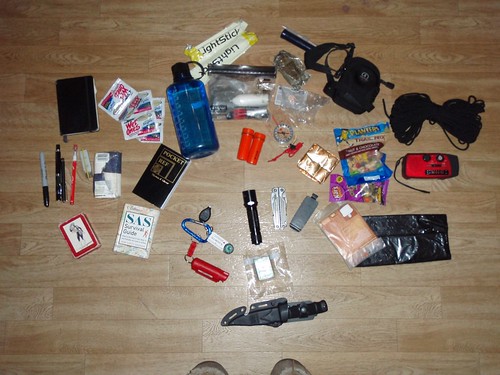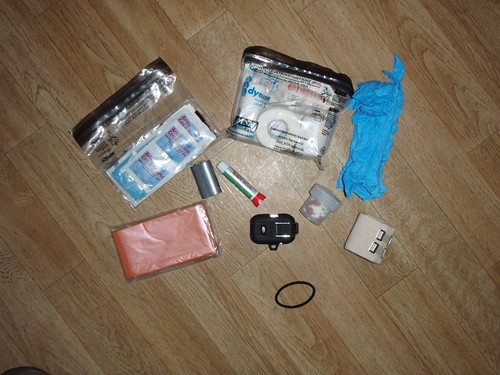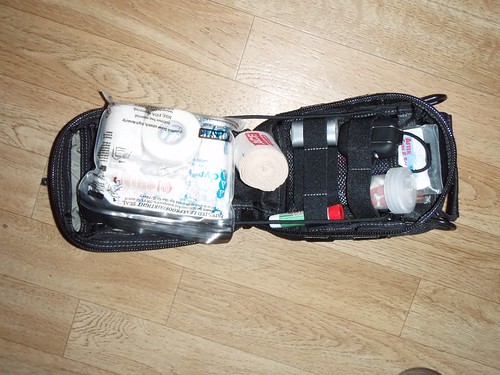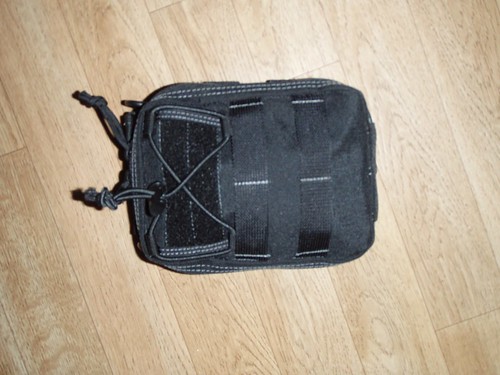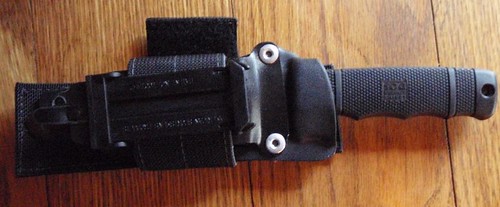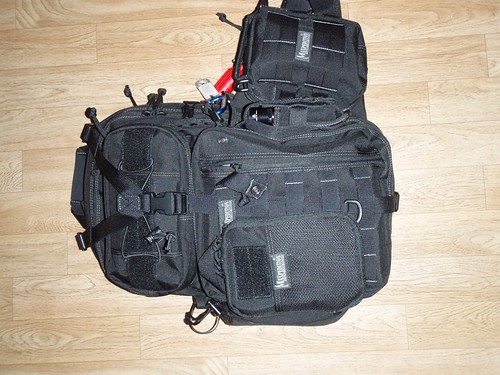By FBI statistics, in 2009 there were 1,318,398 violent crimes reported in the US. Of course, there are crimes that never get reported, so this is the best number we have to go on. In a population of just over 307 million, that's, statistically, better than a 1 in 307 chance of being involved in such an incident. Now, obviously, there are high risk factors that many of us try to avoid, such as drug use, organized crime, and "dangerous" neighborhoods, but the fact remains that, with all the improvements we have made as a species, some of our population decide they will use whatever methods they deem necessary to gain their ends.
What is it?
Why do it?
This should be fairly apparent. With very limited exception we all desire survival. Even those who intellectually might stand opposed to self-defense might find that their instincts will betray their brain if such a situation ever arises. Therefore it seems sensible to me to do just a little thinking about the topic while we have the luxury of time.How did I learn it?
I will first and fully admit that I am NOT a self-defense expert! While I have taken some Eastern Martial Arts training (tae kwon do, kashiman shun riu, and aikido) I don't hold any serious levels of those skills. Most of my close quarters training is Western in form, including longsword, dagger, pole-arm, and grappling. You'll notice most of those forms listed won't be of much use while wandering a modern city as I seldom have a halberd on which to rely. I have also had some firearms experience, but have never, thankfully, had anything worse than a paintball or BB shot in my direction, and hope that never changes. I can count on 3 fingers the number of unplanned (non-consensual) fights in which I ever fought and all were in high school. Please consider that when digesting this information.That said, I have picked up some basic pointers and commonalities of defense that I think are valuable and can serve anyone well, regardless of how they decide to go about preparing for a situation we all hope will never arrive. To supplement the training I've taken, I have fought in armoured combat tournaments and trained others in armoured combat.
How do you learn it?
This is a big area, and this time I will say "Not here - mostly". As I said, I'm not an expert on this, I'm an interested student. My goal is to make you think about it and give pointers to both reduce the need to ever have to defend yourself and some basic things to do if it happens. I will mostly encourage you to seek out additional training depending upon your preferences.First, what do you need to defend yourself against? According to the same FBI statistics mentioned above (and available here), aggravated assault is the most likely danger. This generally means "assault with a deadly weapon", regardless of intent. This may be mugging, an attempted sexual assault, domestic dispute, etc. Broad area, obviously. Robbery falls next, though it may not involve a weapon as this often elevates to the first category. The last 2 violent crimes by quantity are rape and manslaughter, though if we get to this point, defense has likely already failed. All of these are terribly unpleasant, so let's look at how we might go about defending ourselves. I'm going to go in order of most favorable to least, by my reckoning and preference.
#1- Avoidance - Don't be in a position for this to happen! The defensive tool here is called "situational awareness", or listening to your gut. We often suppress this instinctive warning, but it is worth honing it up a bit. When you see that unpleasant alley, don't walk through it. Avoid sketchy parks after dark. Don't wear expensive clothing or jewelry where everyone can see in areas of risk. Too many people, IE men, take a tough guy attitude and "aren't afraid of anything." Well, I'm afraid of being shot or stabbed to death, so I think it's worth taking stock of your surroundings and deciding if what you're about to do or where you're about to walk is worth the risk. Sometimes you may decide it is, but you certainly better be aware of your surroundings.
#2- Run and yell - I think people forget that this is a valid defensive technique. Criminals do not want a ton of attention brought to them, generally, so making noise, setting off car alarms, etc, can convince them not to push forward with their plans. Combine that with GETTING THE HELL AWAY! If you have a viable avenue of escape, use it. Think of this the way many of us were taught to think of driving. At any time, if you had to get away, which way would you go? This takes little time and, once a habit, little thought. In my opinion, everything else we talk about here is a precursor to this method.
#3- Non-lethal distance defense - Pepper spray, mace, and distance tasers fall into this category. The goal of them is to distract, delay, and hopefully incapacitate an attacker so that you can get away. Pick up whatever you can legally carry in your state (and figure out what you need to do so legally, if need be) and keep it on you. Personally, I would defy legality on sprays if needed on this for defense as I'd rather face a charge than end up in the hospital or morgue, but that's a risk I take on myself. Do your research before deciding on a spray to get (I prefer sprays as I think they are more instinctive and more likely to effectively land than distance tasers) and try to find a model where you can get an inert practice canister to try out. Be aware that a stream model may be better than a spray (especially in a windy situation) but requires more aim, thus making that inert practice model more vital. There are folks who are not very affected by certain sprays, but shooting ANY liquid into someones face will give them at least a brief pause, during which, you guessed it, you run!
#4- Firearms - The reason I list firearms before the remaining topics is one of range and staying at a safer distance to avoid personal injury, even though this is controversial to many people. I do not personally carry concealed, a decision that is partially due to legality in the state I work (I can carry in my home state, but not the neighboring one where I spend a lot of time) and partially by request of my wife, who does not like guns. That said, I probably would carry if things were different, mostly so that I would have the experience of carrying when I went somewhere I felt the need. If someone doesn't carry all the time and practice with it regularly, I think it is possibly more dangerous to do so "on occasion" and I would urge them not to do so. I would ALWAYS encourage someone who does carry to have a non-lethal spray as above to use first.
With a firearm, the second you draw it, you are in an lethal force situation. It should never, ever, come out unless there is definite and deadly threat to you or your loved ones. Generally, this means your assailant has a lethal weapon (gun, knife, baseball bat, etc) and has threatened to use it. It can never be brought out to scare someone off as, once it has drawn, YOU may be considered to be assaulting THEM! Compound this with the fact that, if you shoot someone, you have to deal with all the emotional trauma this will bring (no matter how justified you were. Ask an Iraq War veteran if you doubt that this can mess you up!) And, of course, the legal problems that ensue. Suffice to say that, while I think this is a viable form of defense, you SERIOUSLY need to learn all you can about it and train in how and when it can be used properly.
#5- Close quarter weapons - There is an old saying that "Nobody wins in a knife fight." Friends of mine, while teaching stage combat, illustrate this point well by having the combatants wear white t-shirts, then fight with giant markers instead. The resulting marks illustrate well how likely both parties are to receive injury. If your opponent doesn't have a knife, you might seem to have an advantage, but realize you will be the one using what is in most places considered a lethal weapon. I do see value in items like the kubotan when facing an unarmed assailant, but all close quarters weapons require some serious training. Keep in mind you need to be able to bring it into play, as well. The fastest weapon to draw is the one in your hand. And expect that if you are this close you may be injured.
Oh, and I don't consider most of the weapons I have the most practice with, like the sword, to be viable defensive items for everyday situations. It is unlikely you'll have it on you when you need it, and less likely a criminal will mess with you if he sees it on your hip. Some folks may have them around for home defense, but I only think that will work out well if you really, seriously, know how to use a sword. Even then, you're screwed if the guy breaking in has a gun.
#6- Close quarter martial arts - I consider this the last place you want to be, within striking distance of an assailant. It may quickly shift into a bad situation and will almost always require far more skill and training on your part. That said, I think everyone, especially women, need some experience here. Not a black belt in any Asian art, but experience with a handful of quick, effective, injure and escape techniques. Remember, everything here is about getting away, not having a kick-boxing match with some stranger. Leave the movie antics to Hollywood. Break a knee or crush and arch and GET AWAY!
What else can you tell me that may not be common knowledge?
If ever you are involved in a situation you need to defend yourself, it will likely mess you up emotionally and mentally. Please, get the help you need. Many of us have experienced the unpleasantness of injuring a friend, even slightly, and felt the guilt that follows. Compound that and add in the complete loss of personal security and you can begin to understand the impact. If the assault comes from someone who is known, it's even worse. Plan for this to be part of your defensive strategy.Practice what you think you will use. Even if it's getting out that can of pepper spray, building up the muscle memory will be helpful. In a violent situation, your mind often goes to what is called by some the "lizard brain", that instinctive survival state. If you haven't practiced with your defenses, you may not actually utilize them no matter how good they might be.
You will note that I did not include "Call 911" in the defensive options. While I respect the police and what they can do when directly confronted with a bad situation, they will take at least a few minutes to get to you. You won't have minutes to wait. Get away, THEN call 911. Let them help you with the aftermath, whatever that might be.
Finally, remember your single best defense is that mass between your ears. Use it and be safe.
